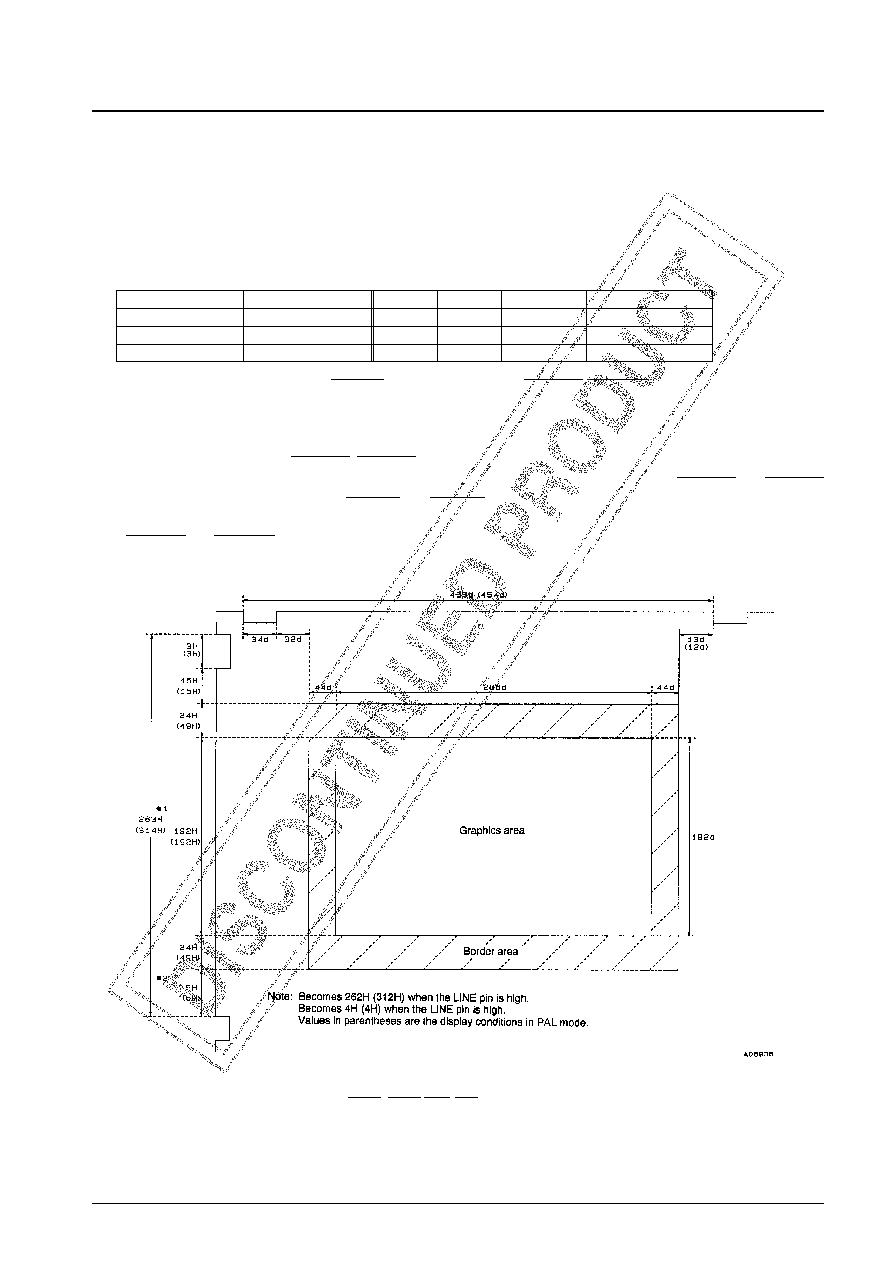- 您現(xiàn)在的位置:買賣IC網(wǎng) > PDF目錄30736 > LC78711E SPECIALTY CONSUMER CIRCUIT, PQFP64 PDF資料下載
參數(shù)資料
| 型號(hào): | LC78711E |
| 元件分類: | 消費(fèi)家電 |
| 英文描述: | SPECIALTY CONSUMER CIRCUIT, PQFP64 |
| 封裝: | QFP-64 |
| 文件頁數(shù): | 4/43頁 |
| 文件大?。?/td> | 714K |
| 代理商: | LC78711E |
第1頁第2頁第3頁當(dāng)前第4頁第5頁第6頁第7頁第8頁第9頁第10頁第11頁第12頁第13頁第14頁第15頁第16頁第17頁第18頁第19頁第20頁第21頁第22頁第23頁第24頁第25頁第26頁第27頁第28頁第29頁第30頁第31頁第32頁第33頁第34頁第35頁第36頁第37頁第38頁第39頁第40頁第41頁第42頁第43頁

Function Overview
1. Crystal clock oscillator; XIN1, XOUT1, XIN2, XOUT2, N/P1, N/P2, FSCO
The XIN1 and XOUT1 pins are connections for an NTSC 14.31818-MHz crystal element, and the XIN2 and XOUT2
pins are connections for a PAL 17.734476-MHz crystal element. The N/P1 pin switches the LC78711E RGB encoder
block between NTSC and PAL modes, and the N/P2 pin switches the decoder block between NTSC and PAL modes.
The FSCO pin outputs a clock signal that is the crystal oscillator frequency divided by 4. The table below enumerates
the pin states vs. the LC78711E operating modes.
2. Display format; N/P1, N/P2, LINE, CSYNC, SON, 4FSC2, FSCIN, VRESET, HRESET, YS, PALID
The LC78711E supports both NTSC and PAL modes, with the N/P1 and N/P2 pins being used to set the mode. See
item (1) above for the pin states in the NTSC and PAL modes. The LINE pin switches the number of scan lines in a
1-V period.
The SON, 4FSC2, FSCIN, VRESET, HRESET, YS, and PALID pins are used with the superimpose function. The
4FSC2 pin inputs a 4 × fsc frequency, and the FSCIN pin inputs the fsc frequency. The VRESET and HRESET
pins input the external video signal VSYNC and HSYNC. The internal V and H counters are reset on the falling
edges of these signals, respectively. The image may be disrupted if the 4FSC2 signal is not locked with the
VRESET and HRESET signals. The YS pin is used to switch the video signal. The PALID pin is used for burst
waveform phase matching in PAL mode.
3. DRAM interface
Interface pins: A0 to A7, DB0 to DB3, RAS, CAS, WE, OE
An external 64k × 4-bit DRAM must be used.
4. Video outputs: VIDEO1, VIDEO2
The luminance signal can be acquired from the VIDEO1 pin.
The chrominance signal can be acquired from the VIDEO2 pin.
No. 5476-12/43
LC78711E
XIN1, XOUT1
XIN2, XOUT2
N/P1
N/P2
TV format
FSCO
14.31818 MHz
*
HH
NTSC/M
3.579545 MHz
*
17.734476 MHz
L
PAL/GBIDH
4.433619 MHz
14.30244 MHz
*
LH
PAL/M
3.575611 MHz
相關(guān)PDF資料 |
PDF描述 |
|---|---|
| LC7871E | SPECIALTY CONSUMER CIRCUIT, PQFP100 |
| LC7871NE | SPECIALTY CONSUMER CIRCUIT, PQFP100 |
| LC7872E | SPECIALTY CONSUMER CIRCUIT, PQFP64 |
| LC7874E | SPECIALTY CONSUMER CIRCUIT, PQFP64 |
| LC78835K | SPECIALTY CONSUMER CIRCUIT, PDIP24 |
相關(guān)代理商/技術(shù)參數(shù) |
參數(shù)描述 |
|---|---|
| LC7871E | 制造商:SANYO 制造商全稱:Sanyo Semicon Device 功能描述:CD Graphics Decoder |
| LC7871NE | 制造商:SANYO 制造商全稱:Sanyo Semicon Device 功能描述:CD Graphics Decoder |
| LC7872E | 制造商:Panasonic Industrial Company 功能描述:IC |
| LC7874E | 制造商:SANYO 制造商全稱:Sanyo Semicon Device 功能描述:CD Graphics Decorder |
| LC7876E | 制造商:未知廠家 制造商全稱:未知廠家 功能描述: |
發(fā)布緊急采購,3分鐘左右您將得到回復(fù)。